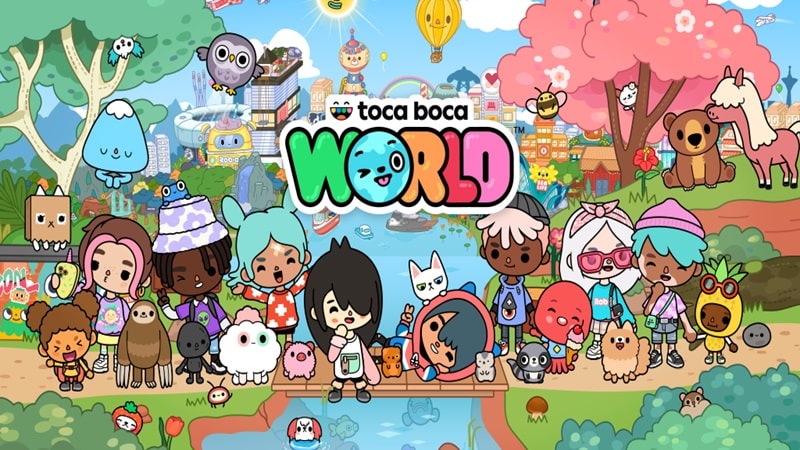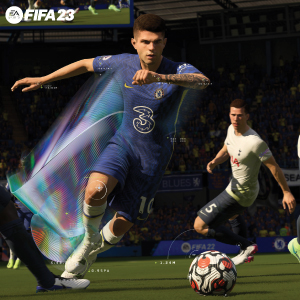Call of Duty: The Legendary FPS Series That Keeps Reinventing War
Among all first-person shooter franchises in gaming history, Call of Duty continues to stand as a global icon of innovation and high-stakes action. Since its inception in 2003, it has redefined how players experience warfare in virtual form. Moreover, the franchise has grown consistently, thanks to a powerful blend of cinematic campaigns, fast-paced multiplayer, and genre-bending game modes like Zombies and Warzone.
Consequently, Call of Duty remains a top choice for both casual gamers and hardcore esports competitors. In this comprehensive article, we’ll explore its timeline, core features, gameplay mechanics, and its unmatched ability to evolve while maintaining relevance.
The Origins of Call of Duty: Realism at Its Core
Initially developed by Infinity Ward, the first Call of Duty game emerged in 2003 with a mission to portray the brutality of World War II through a realistic lens. Unlike many shooters at the time that favored arcade-style action, Call of Duty emphasized squad-based tactics and immersion. Furthermore, it introduced a cinematic feel that helped players connect emotionally with the experience.
As a result, the game received widespread critical acclaim and won numerous Game of the Year awards. Additionally, its success signaled the beginning of a franchise that would not only endure but dominate.
The Modern Warfare Revolution: Changing the Game Forever
With the release of Call of Duty 4: Modern Warfare in 2007, the franchise experienced a seismic shift. Moving away from historical battles and into modern-day warfare allowed the developers to explore new technologies, faster pacing, and complex narratives. Consequently, this installment revolutionized both the series and the FPS genre.
Moreover, Modern Warfare introduced game-changing multiplayer features such as customizable loadouts, killstreaks, and perks. These systems created a personalized experience that attracted millions. At the same time, the campaign delivered unforgettable moments like “Shock and Awe,” proving that storytelling in shooters could be both engaging and intense.
Therefore, Modern Warfare didn’t just raise the bar — it redefined it.
Black Ops and Treyarch’s Bold Creative Direction
While Infinity Ward focused on realism, Treyarch’s Black Ops series took Call of Duty in a darker, more experimental direction. Set against the backdrop of the Cold War, Black Ops explored espionage, brainwashing, and political deception. In contrast to the straightforward military plots of Modern Warfare, it offered conspiracy-driven storytelling and layered characters.
In addition, Treyarch introduced Zombies Mode, which started as a fun extra and quickly evolved into a cultural phenomenon. As the mode expanded, it added complex lore, narrative-driven quests, and new gameplay mechanics, making it a franchise within a franchise.
Furthermore, Black Ops games often experimented with futuristic settings, alternate timelines, and branching storylines, which kept fans guessing with every new entry.
Multiplayer: The Competitive Backbone of Call of Duty
Undeniably, multiplayer has always been at the heart of Call of Duty. Its fast-paced combat, tight controls, and iconic maps like “Nuketown” and “Rust” have become legendary. Moreover, the consistent release of new weapons, maps, and seasonal content has kept the experience fresh year after year.
Similarly, Call of Duty has refined progression systems with each iteration. Players unlock killstreaks, camos, attachments, and ranks through play — all contributing to a satisfying loop of reward and mastery.
However, the implementation of skill-based matchmaking (SBMM) in recent titles has sparked debate. While it ensures competitive fairness, many argue it can limit casual enjoyment. Even so, multiplayer remains a cornerstone that sustains long-term player engagement.
Warzone’s Entry into the Battle Royale Arena
In 2020, Call of Duty: Warzone launched as a free-to-play battle royale, completely shifting the franchise’s position in the modern gaming landscape. Furthermore, it was released at a time when the world was turning to games for social interaction and escapism during the global pandemic.
As a result, Warzone saw explosive growth, reaching over 100 million players within its first year. Its innovations — like the Gulag (1v1 second chance battles), customizable loadouts, and cash-based buy stations — set it apart from competitors.
In addition, Warzone’s massive maps, continuous narrative updates, and live events offered players a rich, evolving world. Consequently, it became one of the most-streamed games on platforms like Twitch and YouTube, further boosting the Call of Duty brand.
Single-Player Campaigns: Cinematic Storytelling with Impact
Although multiplayer often dominates headlines, Call of Duty’s campaigns have consistently delivered blockbuster-quality experiences. Each title brings not just action but emotional weight, political themes, and complex characters. For instance, the Modern Warfare series explored terrorism and ethical warfare, while Black Ops tackled memory manipulation and deep state politics.
Moreover, each campaign is filled with memorable moments — whether it’s the betrayal in “No Russian” or the haunting mission “All Ghillied Up.” These missions have become talking points among gamers and non-gamers alike.
In contrast to open-world RPGs, Call of Duty’s linear structure ensures tightly paced storytelling, allowing developers to craft specific emotional arcs and climactic set-pieces.
Zombies Mode: A Side Mode That Became a Phenomenon
What began as a post-credit bonus mode in World at War has grown into a major pillar of the franchise. Zombies Mode combines survival mechanics with wave-based action, complex Easter eggs, and lore that rivals the main campaign.
Notably, players must work together to survive increasing waves of undead, while simultaneously solving intricate puzzles. In addition, the inclusion of perks, wonder weapons, and evolving maps means every session plays out differently.
Furthermore, spin-offs like “Outbreak” introduced open-world zombie exploration, proving that the mode could evolve alongside mainline gameplay. Despite being optional, Zombies remains one of the most beloved aspects of the series.
Esports, Streamers, and the Call of Duty Community
Beyond gameplay, Call of Duty thrives because of its community. With annual tournaments, the Call of Duty League (CDL), and millions of hours watched online, it’s clear that the franchise has successfully tapped into competitive gaming culture.
Moreover, content creators have become central to Call of Duty’s marketing strategy. YouTubers and Twitch streamers often showcase updates, tutorials, and entertainment, building hype for every release. In addition, custom events, community polls, and developer livestreams allow fans to directly influence the game’s direction.
Consequently, this two-way relationship between creators and developers strengthens loyalty and keeps the fanbase engaged between seasons.
Microtransactions and the Battle Pass Economy
As the gaming industry shifted toward free-to-play and live-service models, Call of Duty adapted with its own take on Battle Passes and cosmetic bundles. While previous entries relied on paid map packs, current titles provide free maps and charge for optional cosmetics.
Although this model ensures a level playing field in terms of gameplay, it has led to increasingly expensive cosmetic stores. Nevertheless, the inclusion of exclusive skins, themed operators, and crossovers (e.g., Godzilla, Rambo, Attack on Titan) continues to attract fans from beyond the typical shooter demographic.
Additionally, players who grind through Battle Passes are rewarded with blueprints, charms, and credits — offering value to both free and paying users.
Pros and Cons of Call of Duty
Pros
-
Exceptionally polished gameplay and visuals
-
Wide variety of modes and content for every playstyle
-
Active competitive and community scene
-
Regular seasonal updates with narrative tie-ins
-
Cross-play and cross-progression functionality
Cons
-
Large file sizes and frequent patches
-
Some features locked behind paywalls
-
Annual release schedule can lead to franchise fatigue
-
SBMM divides opinions among casual players
-
Short campaign length compared to other genres
Final Verdict and Rating
In conclusion, Call of Duty is more than just a video game — it’s a phenomenon that has continuously adapted to meet changing tastes, technologies, and gaming trends. Its mastery of first-person shooter mechanics, combined with storytelling, competitive integrity, and cultural influence, has made it one of the most enduring franchises in the industry.
Although it faces criticism for monetization and repetition, the franchise continues to break boundaries with each installment. Therefore, whether you're a veteran player or someone curious to jump in for the first time, Call of Duty remains one of the most rewarding gaming experiences available today.
Rating: 9.2/10





























